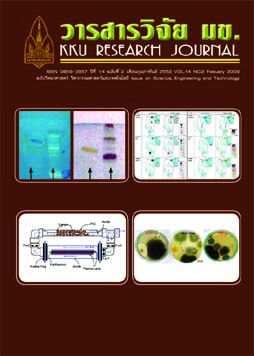Effect of atrazine on fertility of female mice (Thai)
Main Article Content
Abstract
Atrazine is widely used as a nonselective herbicide in agricultural fields. Previous studies had shown that atrazine acts as an anti-estrogen in female animals and anti-androgen in male animals. This information led us to hypothesize that this herbicide disrupts the estrous cycle, follicle development and uterine histology of female mice. Experimental mice were gavaged with atrazine at doses of 0, 20 or 30 mg / 100 g BW for 28 consecutive days. Results were determined at 0, 14 and 28 days after treatment. After 0 days of withdrawal, the estrous cycle of both treated groups was significantly increased in the duration of proestrus but decreased in the duration of diestrus. Histological examination of ovaries and uteri of both treated groups showed decrease in the number of preantral follicles and endometrial thickness, but an increase in the number of atretic follicles. All of these effects were reversible after 28 days of withdrawal. In conclusion, atrazine affects on the fertility of female mice were caused by disruption of the estrous cycle, follicle development and histology of the uterus. However, it is a temporary effect.


